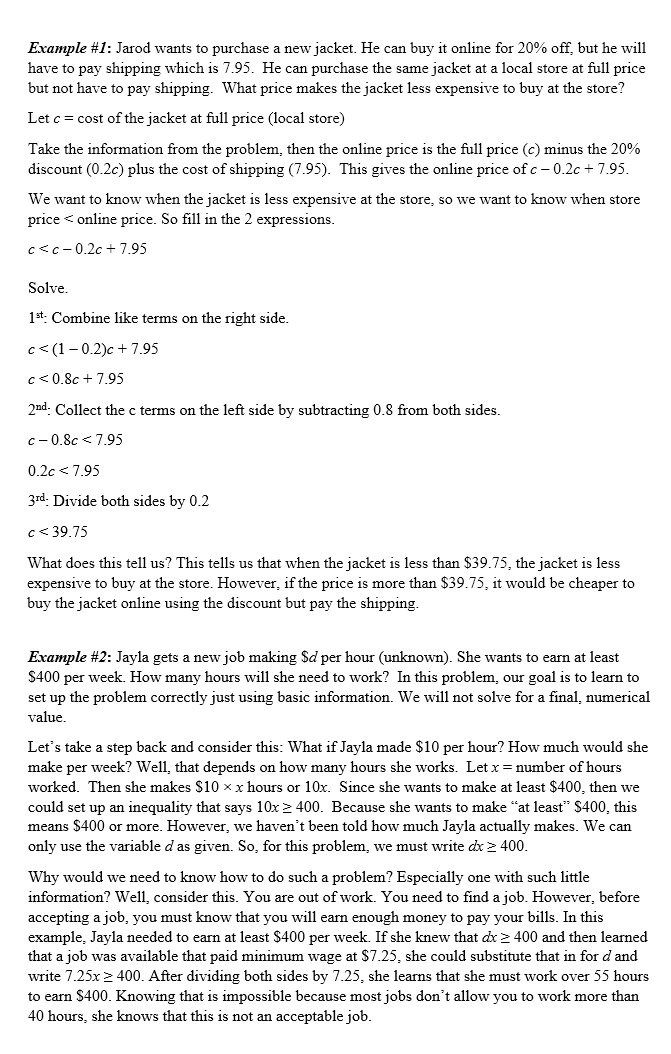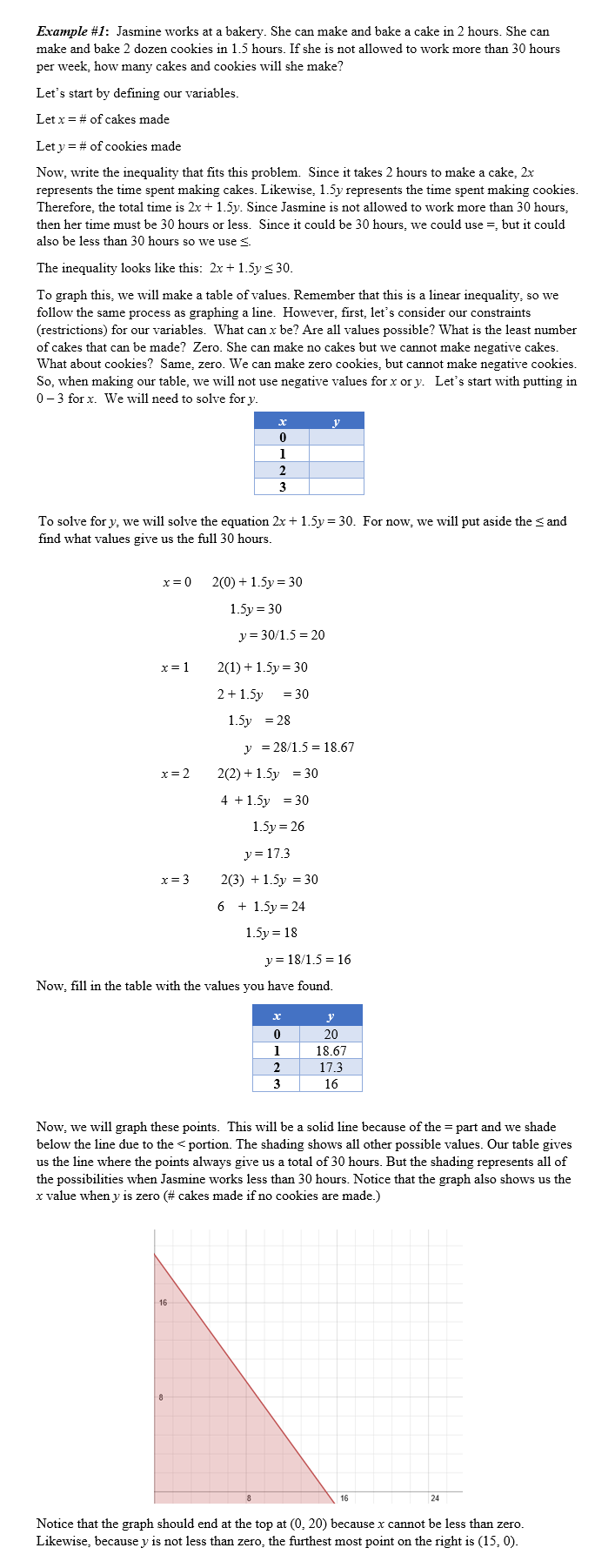Linear Inequalities in One Variable
To review inequalities, click here. (Unit 12, Linear Inequalities)

Example #3: Click on the link to watch the video "Writing One Variable Inequalities" or click on the video.
After watching this video, we can solve these inequalities to find what the number could be.
The first example gave 2/3(x) – 5 ≥ 11
Add 5 to both sides gives 2/3(x) ≥ 16
Multiply both sides by 3/2 to get x ≥ 16 (3/2)
x ≥ 24 This means that x must be at least 24 (24 or greater).
Example #4: Click on the link to watch the video "Constructing and solving a one-step inequality" or click on the video.
Now, let's take this example further. If x < 333 1/3 tiles, what is the most number of tiles he can purchase? He cannot buy a partial tile, so 333 is the most he can buy. When graphed, the graph should not exceed past the point where x = 333. What is the least number of tiles he could purchase? Well, zero, of course. But then, he wouldn't get a patio!
What is our domain and range for this problem? The domain is represented by the number of tiles. How many tiles can the contractor purchase? He can buy anywhere from 0 to 333 tiles. We write this as
0 ≤ x ≤ 333.
The range is represented by how much the contractor is spending. He will spend anywhere from $0 to how much 333 tiles cost. Since 333 × 3 = 999 tiles, 999 is the upper limit of the range. We write this as
0 ≤ y ≤ 999.
Stop! Go to Questions #1-10 about this section, then return to continue on to the next section.

